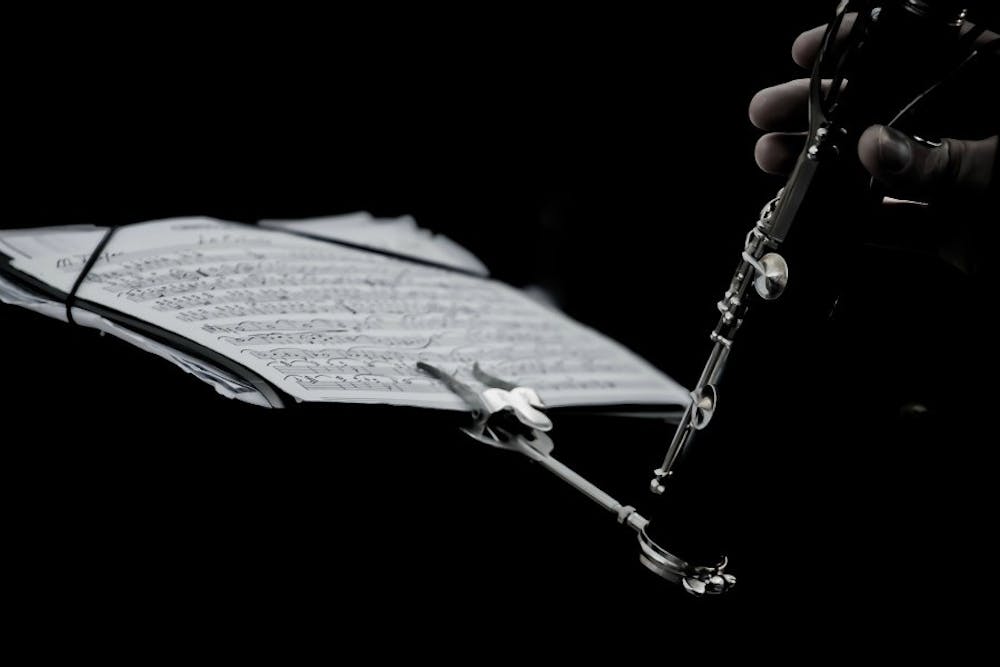By Emma Shibley, For The Miami Student
One hundred years of the Miami University Symphony Orchestra. Fifty years of The Sound of Music. Twenty years of Global Rhythms.
On Oct. 17, all three anniversaries will be celebrated in Hall Auditorium by more than 300 musicians and dancers - many of them international artists, all of them performing music from across the world.
Tickets were sold out 10 days before the show.
"There's going to be so much energy. There's going to be so many people [involved] for just one song," first-year Lucas Conant said.
Conant will perform with Miami University's percussion ensemble in the upcoming concert, and played the surdo de mayo drum in a Brazilian samba piece during the Sept. 17 iteration of Global Rhythms, "Windmills of Our Minds."
"It's almost overwhelming," said Ashley Overby, the Orchestra's vice president and associate principle violist. "It's really impressive even getting that many people on the stage."
It's the norm to have two unique Global Rhythms concerts every fall, the first event being smaller with less student involvement. In addition to the Percussion Ensemble, Saturday's concert will feature the Miami University Jazz Ensemble, the Orchestra, and singers from Miami's new musical theatre minor.
Leading the operation is Srinivas Krishnan, director of the Global Rhythms music ensemble. The Miami alumnus founded Global Rhythms 20 years ago, and now he travels the globe performing and teaching world music.
Everyone calls him Srini.
"He's really passionate about helping students realize their potential … he's always so generous," said Overby.
As the event is an incredible feat, it takes innumerable hours of work in coordination over the span of a complete year for Srini and Ricardo Averbach, the director of the Orchestra and a key player in planning Global Rhythms.
"The music we perform for Global Rhythms takes a little bit different mindset to get it up to the standard we normally have," said Gigliotti.
In rehearsal last week, Averbach coached the Orchestra in playing flat, just slightly out of tune.
"The orchestra has to stay together, or else it'll be really out of tune," he explained to their confusion. "It's not random."
The whole point of the exercise was to practice what it'll be like playing with an alpine horn - the big pipes that people blow from mountaintops and cause avalanches in cartoons. They're made from natural materials, resulting in some unpredictable variances in pitch.
"We're largely accompanying these [guest] artists," Overby clarified. "I've found that they have a more fun approach to music … they have a different attitude, it feels more spontaneous."
Each piece and its origin culture is unique. Averbach and Srini decided together that the concert would be collage style - meaning one piece goes right into narration, which goes right into another piece, with no applause in between.
But the concert will be far from fragmented.
The melismas - a type of melodic embellishment - repeated in one choral song are mirrored by violins in a subsequent orchestral piece, featuring two members of the Cincinnati Ballet. The rhythms of an Indian dancer's feet align with the beat of two-dozen African djembe drums.
The stories behind the musical selections take the audience from the Swiss Alps to the Balkans, Bulgaria to Uzbekistan, illuminating the relationships between musical traditions and sovereign histories like crisscrossed lines on a map.
"I had come to Miami knowing about Global Rhythms - I wanted to be in it so badly," said junior Chandni Chandiramani, the concert's project coordinator.
As project coordinator, Chandiramani acts as the point of contact for the guest artists that Srini selects - sending emails, meeting and speaking with the internationally-renowned musicians.
She introduced herself to Srini early in her first year on campus and has been working with him ever since.
The Miami Unviersity Orchestra will be performing at the 20th anniversary Global Rhythms show at 7 p.m. this Saturday, Oct. 17 in Hall Auditorium.

